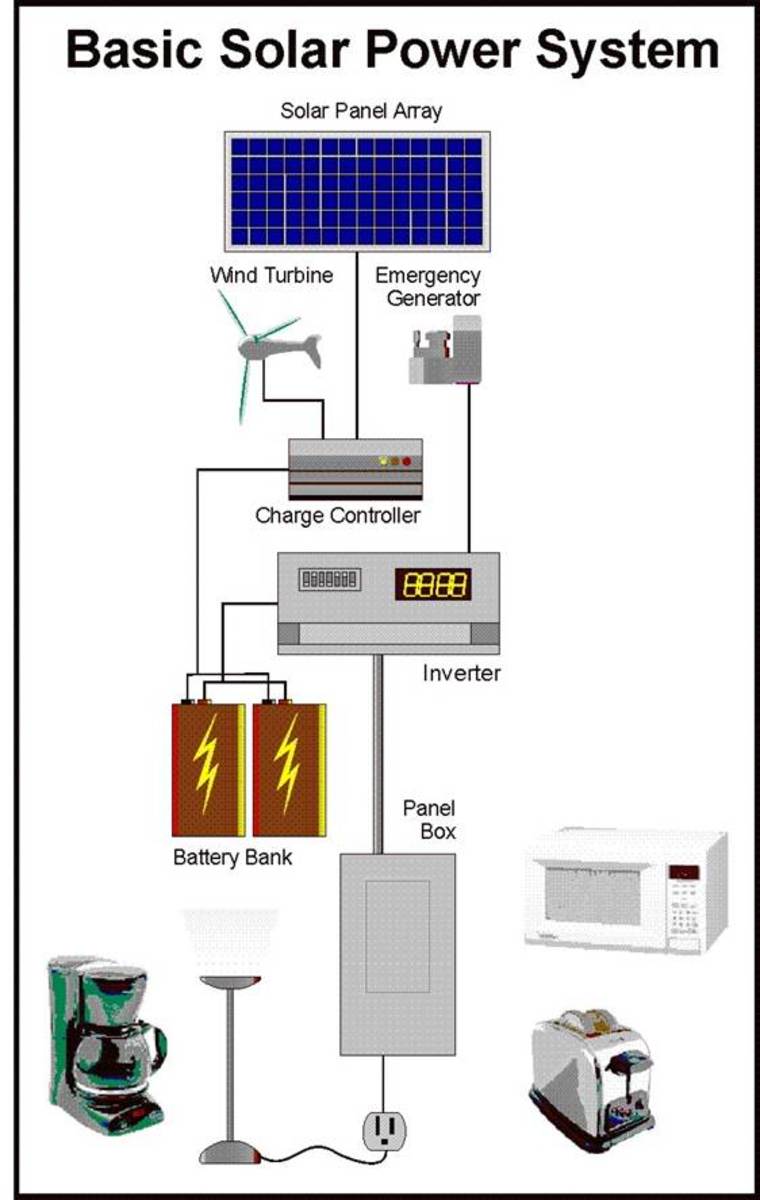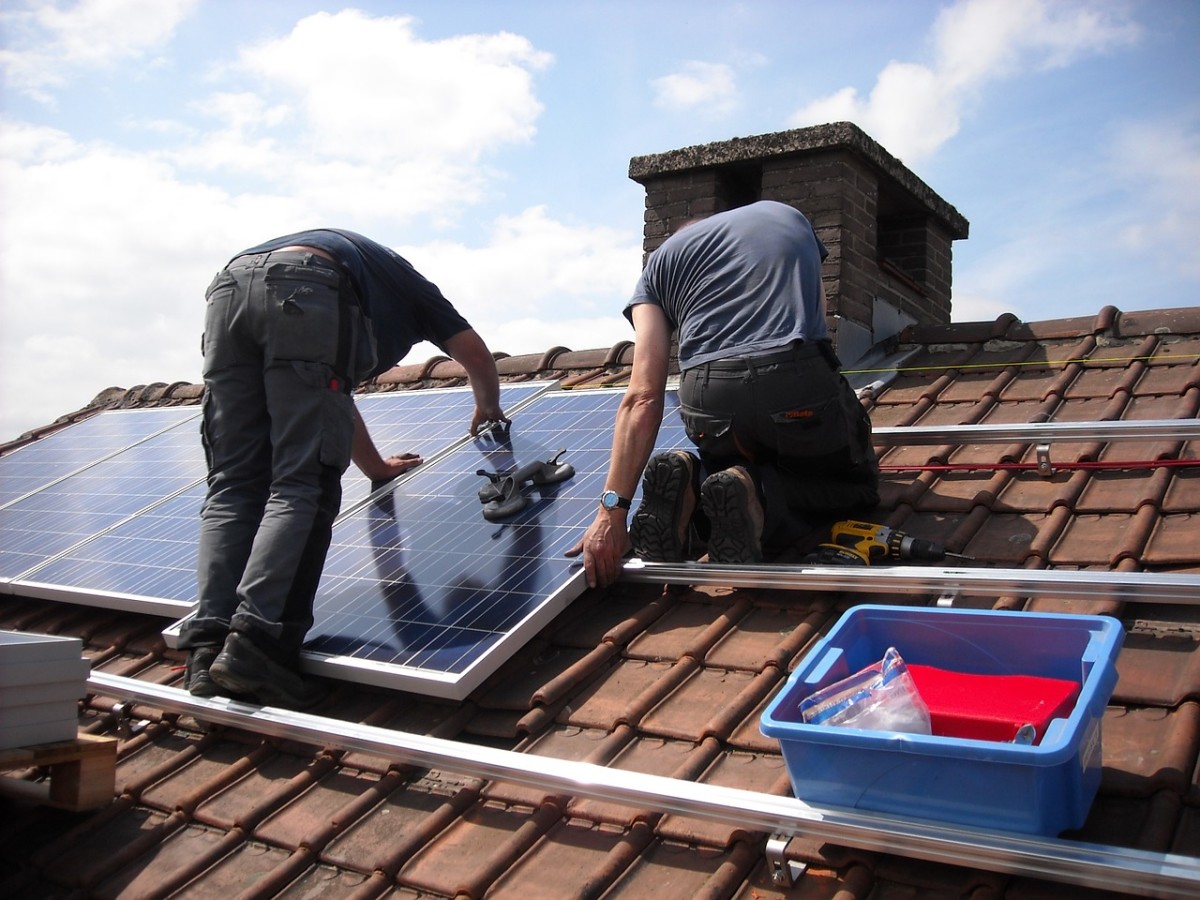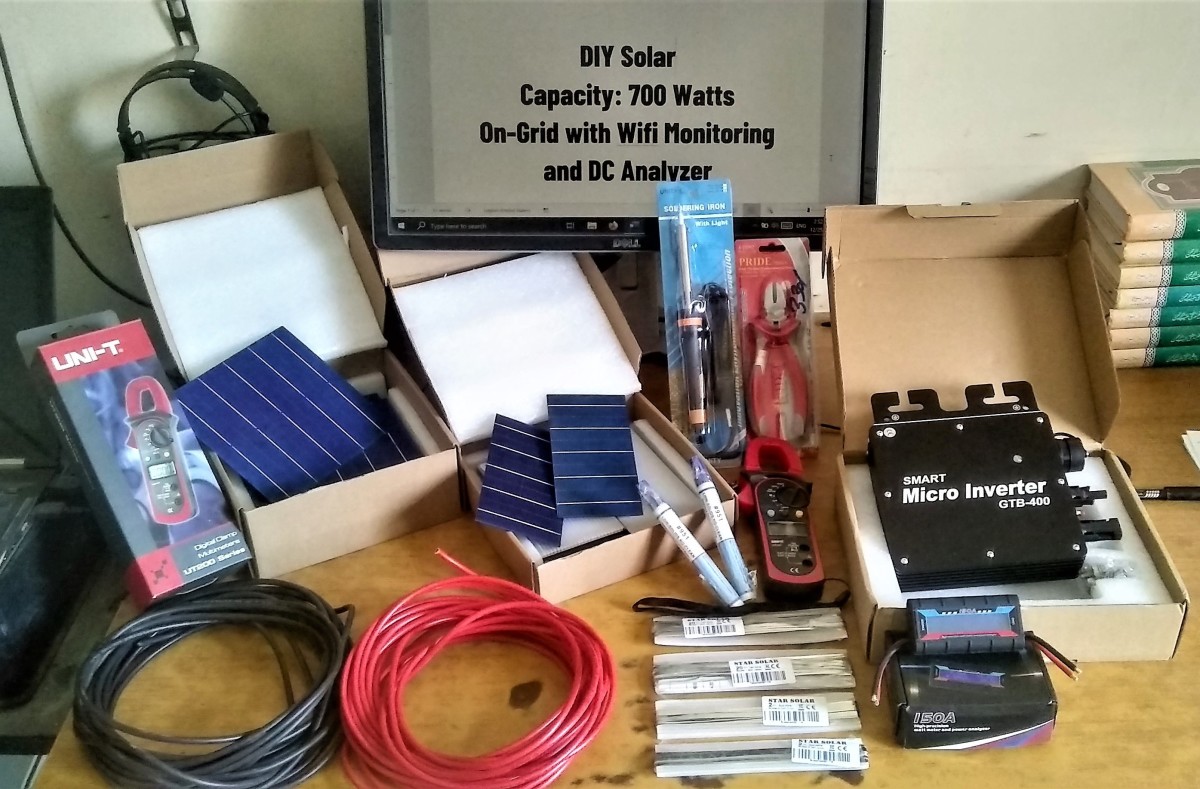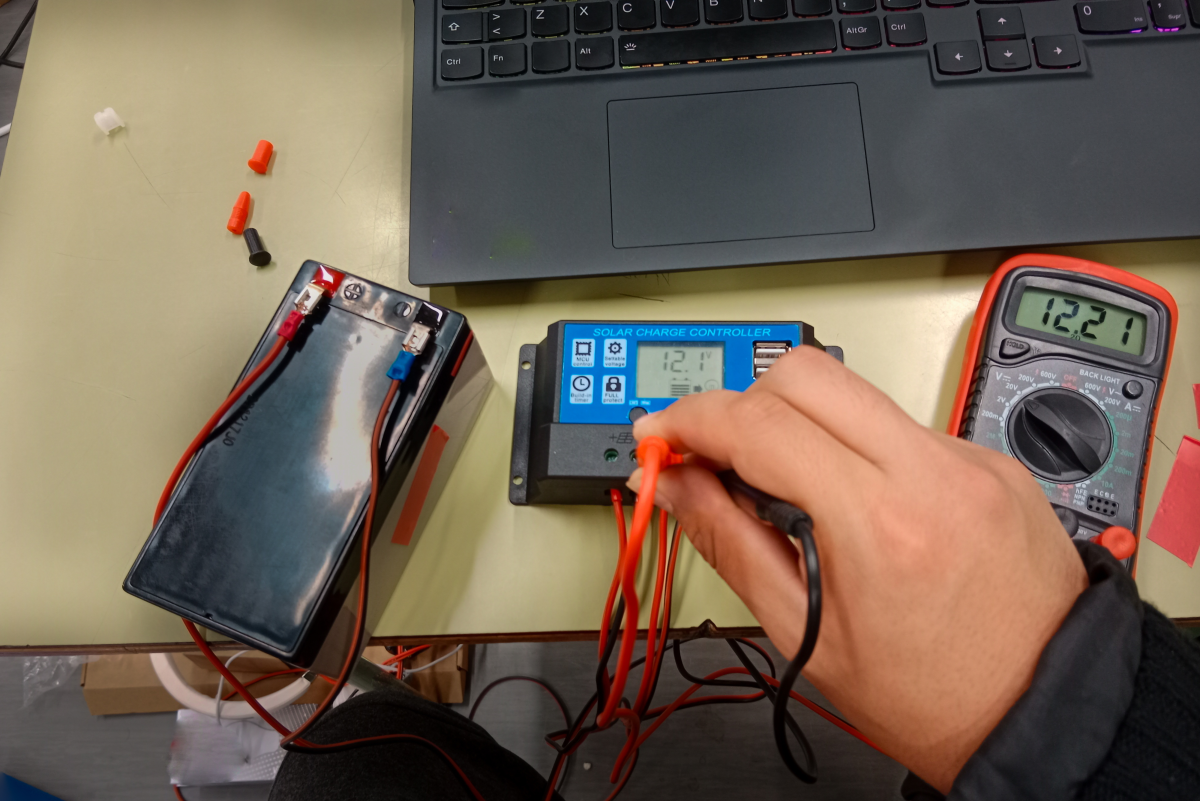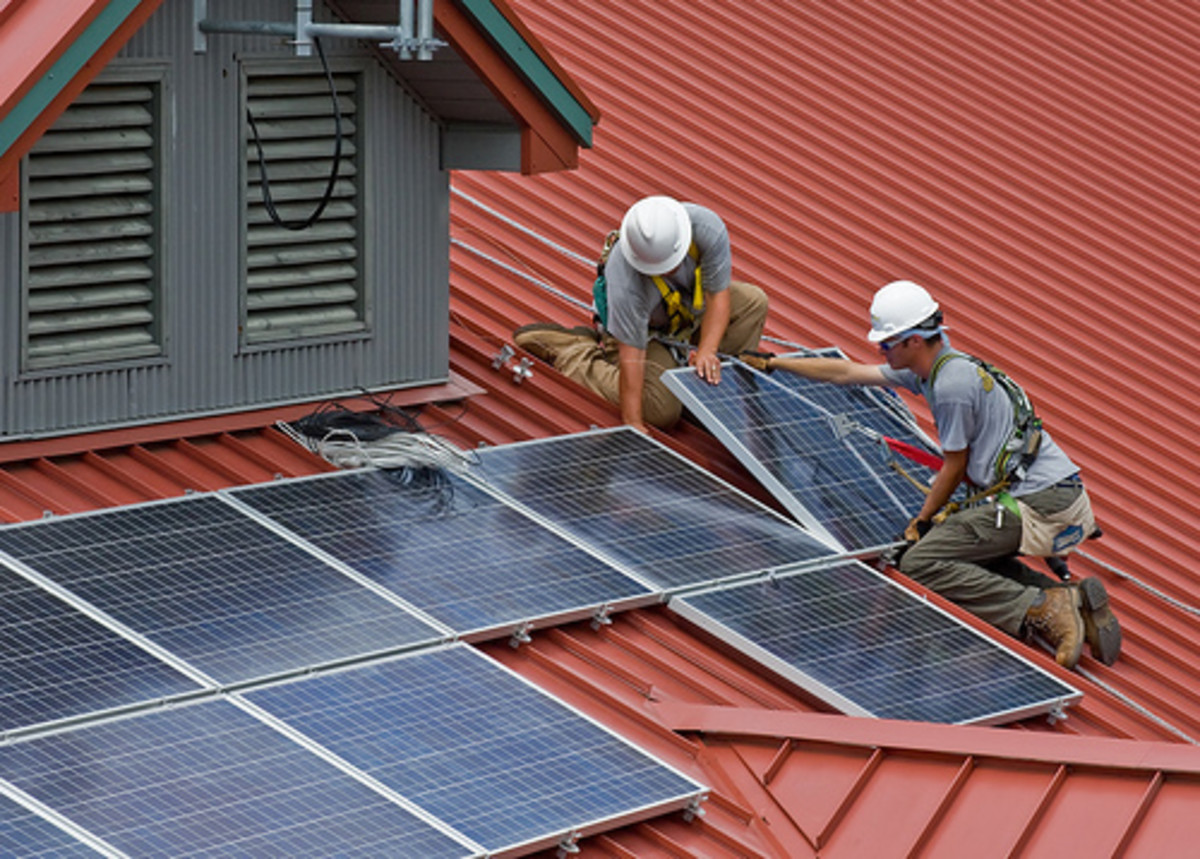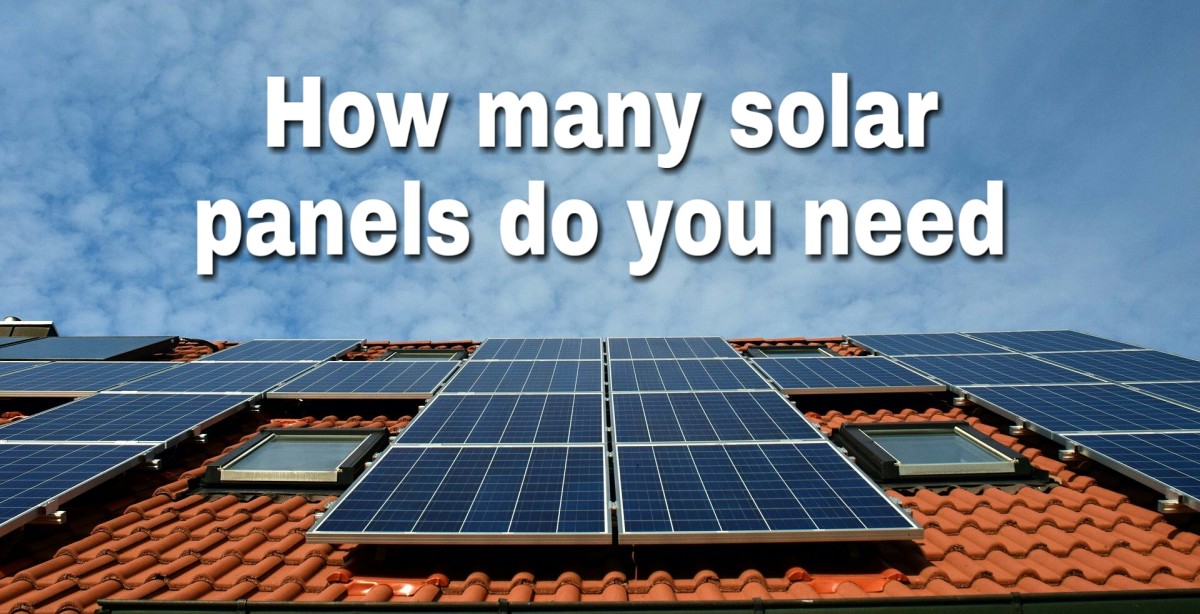Solar Panels Pros and Cons
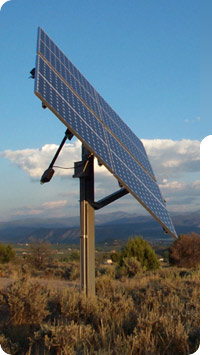
monthly average kilowatt usage
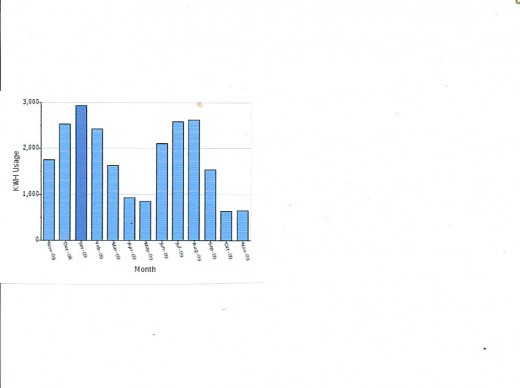
Before you buy....
Having built a operational solar panel system for alternative energy from the ground up and having first hand experience, I feel there are some things that are worthy of consideration before you lay your hard earned cash down for a solar powered system to save energy. My system is not at full capacity as of yet, but I have learned a few things along the way that might be beneficial to those contemplating going solar power. It is my intention to reduce and/or eliminate my light bill.The more I save, the less that I have to mail off to the light Company every month. I endeavor to break that addiction. First, there are four main components that make up a solar powered system. They are the solar panels, controller, batteries, and the inverter. The graph to the right indicate my actual kilowatt usage. In July of 2009 is when I started my solar project.
1.Solar panels- Solar panels are made up of Photovoltaic cells arranged in series to make up a total of 18 volts. To properly charge a 12- volt battery, the voltage must be at least 18 volts. These cells produce approximately.5 volts each. These cells are then soldered in series (negative to positive), for a total 36 cells. 36 x .5 = 18 volts. Each additional solar panel added would be wired in parallel (positive to positive and negative to negative). This would add power while keeping the volts the same. Solar Panels only generate electricity, it does not store it. Batteries will be needed for storage.
a. To buy or build solar panels...
Pros--The main benefit for building your own solar panel are substantial $$$$ savings. I have a 4' x 8' solar panel on my system. a comparable solar panel on the Internet sells from $1100.00-$1300.00. I built mine for a total of 315.00. You can see the huge financial benefit savings. You can find ads on the Internet for building your own panels for $100.00 or less. When they listed the items needed, they always had items that were "on hand" with no cost. I quickly found out that I don't have these items laying around the house. My costs escalated to 315.00. Specific plans for making the panels can be purchased for $20.00 and up. By keeping my costs down, I discovered that my break even time was shortened to months instead of years.
Cons--Soldering these cells together is very tedious work and time consuming. I believe it is because of the labor involved in the making of the panels are why they are so expensive on the market. In my 4'x8' panel, I have 144 cells. Each cell has eight soldering points. Two on the top, and six on the bottom. They do offer pre-tabbed cells at a increased price which means less soldering. They are very fragile and can be broken easily. I believe I only broke two when building my panel.In an effort to keep my start up costs to a minimum I elected to make my own. I have done very little soldering in the past, but I progressed fairly quickly. In my own personal opinion, I believe the average person could do it with a little practice.
2.Controller--The controller has a dual purpose. It regulates the charge to the batteries and displays the voltage and amperage coming from the solar panels. I have a 30 Amp controller on my system. It costs about 70.00. When it senses that the batteries are fully charged, it will cut back the charge to the batteries to prevent overcharging. The controller also displays the battery condition such as under/over charged. I know that when my capacity exceeds 30 Amp, I will have to replace it with a larger one.
3. Batteries--Batteries stores the power that the solar panels generate. It is recommended that a marine or deep cycle battery be used in a solar power system. You could expect to pay somewhere around $85.00 for each battery.The number of batteries needed with be dependant upon the power generated by the solar panel and electricity usage.
4. Inverter--The inverter converts the 12v battery voltage to 120v AC. The size of the inverter will depend on your power use requirement. In my case, I have a 3,000 watt inverter with a peak load of 6,000 watts. This has a price range of $300.00-$400.00. It will handle small appliances, ceiling fans, lights and refrigerator. In the future I will have to upgrade, but I am not there yet.
Should you decide to build your own solar panel, The solar cells can be purchased on EBay. There is a class B cell that is sold. It has small chips in the edges of the cells. It is cheaper than the class A cells with no chips for further savings. I have Class A&B in my solar power system. The voltage output of the class B cell was not affected by the chip. It is more cosmetic than anything. For those of you that want to further reduce the cost, it may be a consideration.
I embarked on my project not knowing for sure if I could do it or not. After the experience of building my first panel, I now have full confidence in my solar power system and am very pleased on the way it is working for me. The system does work. I do see a reduction of my light bill. This is real money saved with a return of my investment of time and money. I would like to offer a couple of tips I have learned.
When the output exceeds the input from the solar panel, you began to be on a declining scale. Sooner or later, you will run out of power. The real skill that only comes from experience, is to know how much you can use while maintaining a good charge on the batteries. Several factors can affect the charge rate. Hours of direct sunlight, cloud cover, angle of solar panels in relation to the sun, ect. Find that middle ground. In the summer, I powered up my buildings out back with my barn. I have two 20-mile electric fence controllers that run 24 hours a day. My solar power system was virtually maintenance free. I did not have to do anything as the system ran itself. I installed it early this last spring.
We are coming into fall now and the hours of daylight are decreasing. Coupled with extended periods of rain and cloud cover, it remains to be seen how much of an impact it will have on generating electricity.
It will also be beneficial to have a solar powered system in the event of an ice storm. With an array of ten batteries hooked up, I can have emergency power for 2-3 days to power the lights in the house at the flip of a switch. To me, this is a important benefit. Having said this, I believe you can make a more informed decision on your solar powered project.
How to Make A Solar Panel
- How To Make A Solar Panel
If your considering using solar power for your home, you will need to know how to make solar power.Making solar panels can be a enjoyable hobby for the do-it-yourselfer as well as experiencing the... - How to Live Off-Grid Successfully
If you have been wondering how to live off grid, is it really possible, and can I do it, the quick answer to all of these questions is, "Yes!". What do you need to do to get there?
Saving electricity
- How to save electricity and reduce electricity Consumption -Alternatives Energy options
Every equipment in the world uses the electricity .Now the world (mainly the gods own land ) is facing a serious problem of electricity deficiency. So in this situation we want to reduce our usage of...
- Renewable Energy: Natural Sources of Energy
Renewable energy sources, also known as natural sources of energy, are those which it is possible to use without diminishing the resource. This page will give a basic, relatively non-technical overview of...

